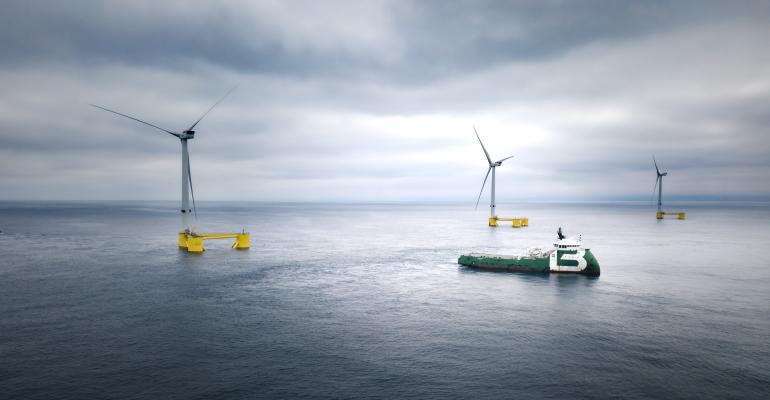In the US offshore wind sector forward pace has slowed recently, with a number of potential offshore power providers terminating their previously agreed upon Power Purchase Agreements with the authorities or utilities in the individual states.
Higher than anticipated costs, as well as supply chain disruptions, were the reasons cited for these deal terminations. Turbine safety has also come into play. Most recently, equipment manufacturer GE Vernova’s unwillingness to pursue a programme of producing 18 mW turbines led New York State to withdraw from discussions with three providers who had been negotiating deals for putting an aggregate nearly 4 gW of wind energy generating capacity in place in waters in and adjacent to the New York Bight.
To date, the seven offshore wind farms approved, at the Federal level, by the Bureau of Ocean Energy Management (BOEM, an agency within the Department of the Interior) are currently seeing (or will soon be) the deployment of turbines fixed on the seabed in waters at depths of up to several hundred feet. “Sunrise Wind” is the latest project to get the green light from BOEM. The 924 mW configuration 30 miles east of Long Island, New York, will be operated by Ørsted, and to be built out in conjunction with regional utility Eversource- handling shoreside construction.
However, at the Federal level, the US is looking at a “Floating Offshore Wind Shot”- where floating turbines could be placed in deeper waters, which, in turn is part of the US Department of Energy’s (USDOE) broader “Energy Earthshots Initiative”. The stated goal of the Wind Shot is to, “Reduce the cost of floating offshore wind energy by more than 70% by 2035 to position the US as a leader in floating offshore wind design, development, and manufacturing.”
The first volleys in the floating wind effort are soon to be fired- with BOEM now looking closely at issuing proposals for leasing in the deeper waters offshore Maine, on the East Coast, and offshore Oregon, on the West Coast. Both lease areas are in waters where the Outer Continental Shelf drops off sharply, in contrast to the areas along the East Coast where offshore wind leasing has occurred so far.
BOEM has now announced that its contemplated Gulf of Maine lease “would include eight lease areas offshore Maine, Massachusetts and New Hampshire, totaling nearly one million acres, which have the potential to generate approximately 15 gW of clean, renewable energy and power more than five million homes,” and that “BOEM is seeking feedback on various aspects of the proposed lease areas, including size, orientation and location of the eight lease areas and which areas, if any, should be prioritized for inclusion or exclusion from this lease sale.”
In the Pacific, the agency says that “The proposed lease sale in Oregon includes two lease areas totaling 194,995 acres — one in the Coos Bay Wind Energy Area and the other in the Brookings Wind Energy Area — which have the potential to power more than one million homes with clean renewable energy.” BOEM adds that: “Along with the proposed lease sale, BOEM has released its draft environmental review of potential impacts associated with offshore wind energy leasing activities for public review and comment.” Along both coasts, impacts on local communities, and development of supply chains, are also important items that BOEM seeks comments on.
Readers download resources related to this story below
https://www.energy.gov/eere/wind/floating-offshore-wind-shot
https://www.doi.gov/pressreleases/interior-department-proposes-offshore-wind-sales-oregon-gulf-maine
Copyright © 2024. All rights reserved. Seatrade, a trading name of Informa Markets (UK) Limited.
Add Seatrade Maritime News to your Google News feed.  |
